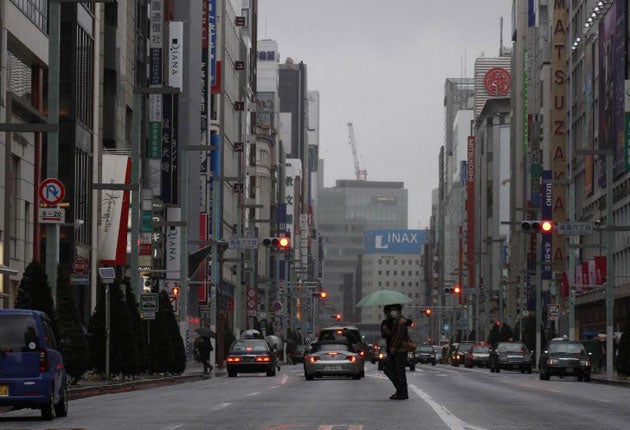Your support helps us to tell the story
From reproductive rights to climate change to Big Tech, The Independent is on the ground when the story is developing. Whether it's investigating the financials of Elon Musk's pro-Trump PAC or producing our latest documentary, 'The A Word', which shines a light on the American women fighting for reproductive rights, we know how important it is to parse out the facts from the messaging.
At such a critical moment in US history, we need reporters on the ground. Your donation allows us to keep sending journalists to speak to both sides of the story.
The Independent is trusted by Americans across the entire political spectrum. And unlike many other quality news outlets, we choose not to lock Americans out of our reporting and analysis with paywalls. We believe quality journalism should be available to everyone, paid for by those who can afford it.
Your support makes all the difference.Japan's nuclear experts admitted today that the Fukushima reactor disaster was worse than anything they ever imagined could have happened.
"We have experienced a very huge disaster that has caused very large damage at a nuclear power generation plant on a scale that we had not expected," said Hidehiko Nishiyama, deputy head of the country's Nuclear and Industrial Safety Agency.
And another official with the agency admitted: "There is nothing else we can do but keep doing what we've been doing."
Engineers are struggling to restore electricity to the plant, but getting the power flowing will not be the end of their battle.
With its mangled machinery and partly melted reactor cores, bringing the complex under control is a monstrous job.
Restoring the power to all six units at the tsunami-damaged complex is key, because it will, in theory, power up the maze of motors, valves and switches that help deliver cooling water to the overheated reactor cores and spent fuel pools that are leaking radiation.
Ideally, officials believe it should only take a day to get the complex under control once the cooling system is up and running. In reality, the effort to end the crisis is likely to take weeks.
Conditions at the plant have remained volatile since the earthquake and tsunami wrecked it. Today a plume of smoke rose from two reactor units prompting workers to evacuate.
In another setback, the plant's operator said it had just discovered that some of the cooling system's key pumps at the complex's troubled Unit 2 no longer worked - meaning replacements have to be brought in.
Tokyo Electric Power Company said it had placed emergency orders for new pumps, but how long it would take for them to arrive was unclear.
If officials can get the power turned on, get the replacement pumps working and get enough seawater into the reactors and spent fuel pools, it would only take a day to bring the temperatures back to a safe, cooling stage, officials predicted
The US Nuclear Regulatory Commission said that Units 1, 2 and 3 have all seen damage to their reactor cores, but that containment is intact, relieving concerns about Unit 2, where an explosion damaged a pressure-reducing chamber around the bottom of the reactor core.
Today's evacuation of workers from the plant came after smoke began rising from the spent fuel storage pool of the plant's problem-plagued Unit 3, which also alarmed plant officials over the weekend with a sudden surge of pressure in its reactor core.
What caused the smoke to billow first from Unit 3 and then from Unit 2 is still under investigation, nuclear safety agency officials said.
Problems set off by the disasters have ranged far beyond the shattered northeast coast and the wrecked nuclear plant, handing the government what it has called Japan's worst crisis since the Second World War. Rebuilding may cost as much as 235 billion dollars and the death toll will exceed 18,000.
Traces of radiation are contaminating vegetables and some water supplies, although in amounts the government says do not pose a risk to human health in the short term.
Sale of raw milk, spinach and canola from prefectures over a swathe from the plant toward Tokyo ahve been banned. The government has just started to test fish and shellfish.
"Please do not overreact, and act calmly," Chief Cabinet spokesman Yukio Edano said in the government's latest appeal to ease public concerns. "Even if you eat contaminated vegetables several times, it will not harm your health at all."
The World Health Organization said Japan will have to do more to reassure the public about food safety.
"Walking outside for a day and eating food repeatedly are two different things. This is why they're going to have to take some decisions quickly in Japan to shut down and stop food being used completely from zones which they feel might be affected," a spokesman said.
The troubles at Fukushima have in some ways overshadowed the natural catastrophe, threatening a wider disaster if the plant spews more concentrated forms of radiation than it has so far.
The World Bank said that Japan may need five years to rebuild from the disasters, and the cost to private insurers will be up to 33 billion dollars.

Join our commenting forum
Join thought-provoking conversations, follow other Independent readers and see their replies
Comments